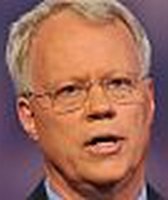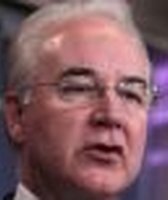Stand up for the facts!
Our only agenda is to publish the truth so you can be an informed participant in democracy.
We need your help.
I would like to contribute
One of the hottest topics of this presidential campaign has been jobs -- how many have been created and lost, and who has the best plans for restoring them.
Republican presidential nominee Mitt Romney and President Barack Obama have honed in on this key area and made several attempts to outshine the opposition.
Below are abbreviated versions of fact checks about the candidates’ statements during the campaign. Look for the complete fact checks at the PolitiFact online sites.
Want to comment on our Truth-O-Meter rulings? It’s easy. Just go to our Facebook page: www.facebook.com/politifact.georgia?fref=ts. Readers can follow us on Twitter at: PolitiFactGA.
Obama: "After a decade of decline, this country created over half a million manufacturing jobs in the last 2 ½ years."
The president made this claim in September during his acceptance speech at the Democratic National Convention in Charlotte, N.C.
Because of the wording of his claim, we checked whether the numbers were right, not whether Obama's policies were instrumental.
According to seasonally adjusted data for manufacturing jobs from the Bureau of Labor Statistics, between December 1999 and December 2009 -- the decade Obama appears to be referring to -- manufacturing employment fell from 17.3 million to 11.5 million, a decline of just over one-third. So Obama’s correct that manufacturing jobs had experienced "a decade of decline" by the time he took office.
During the period Obama chose -- from January 2010 to July 2012 -- manufacturing jobs began to rise again, by 532,000. That’s "over half a million manufacturing jobs," as Obama put it.
It’s worth noting that while the reversal has been striking, this rise has still replaced only a fraction of the manufacturing jobs lost during the "decade of decline." The manufacturing jobs gained during the turnaround replaced less than 10 percent of the jobs lost during the decade of decline.
The rise in manufacturing jobs that Obama is referring to may be modest compared with the prior decade’s decline, but he has described the numbers carefully.
We rated his statement True.
Romney: "If you take into account all the people who are struggling for work, or have just stopped looking, the real unemployment rate is over 15 percent."
Romney made this statement in early February in Las Vegas the day of the Nevada caucuses, which he won.
To check the claim, we examined data from the federal Bureau of Labor Statistics, which offers a broader, alternative measure of "labor underutilization" known as U-6. It calculates this by dividing the sum of three groups (unemployed, marginally attached to the labor force and working part time for economic reasons) by the sum of the labor force plus marginally attached workers.
Looking at the numbers for January 2012, which were the most recent numbers available at the time, the regular unemployment rate was 8.3 percent. The U-6 rate, however, was significantly higher -- 15.1 percent. The difference stems from the fact that many workers are employed part-time when they’d rather be full-time or have given up looking for work, at least for now.
While the U-6 measurement is not the official gauge of unemployment in the United States, it’s a valid statistic to consider in conjunction with others. It's true that the BLS describes it as a "labor underutilization" rate rather than an "unemployment" rate, since some of the people it counts are part-time workers who aren't officially "unemployed."
While this distinction is important to economists, we don't think it's a major problem for a speech made to the general public. In other words, for a general audience, we think "the real unemployment rate" is acceptable shorthand for "the labor underutilization rate," especially when a brief description of the measure is provided.
We rated this claim True.
Obama: "The only time government employment has gone down during a recession has been under me."
During a speech on the economy May 8 in Albany, N.Y., Obama sought to put the nation’s economic challenges on his watch in historical context.
"It's worth noting, by the way -- this is just a little aside -- after there was a recession under Ronald Reagan, government employment went way up," Obama said. "It went up after the recessions under the first George Bush and the second George Bush. So each time there was a recession with a Republican president ... we compensated by making sure that government didn't see a drastic reduction in employment. The only time government employment has gone down during a recession has been under me."
We’ve defined "government employment" in the most expansive way -- a combination of federal, state and local government employment -- since Obama didn’t specify a particular level of government.
Obama’s statement is not true if you just look at the recessionary period itself, and it's not true if you look at a combination of the recession and the recovery -- in both cases, it happened during the 1980-1982 recession. And while government employment did eventually go up following the Reagan-era recession, the rise began more than a year after private-sector employment picked up, which negates Obama's argument that his predecessors were able to compensate for weak private-sector job creation with accelerated government hiring.
We rated Obama’s claim False.
Romney: "You can hire lots of bureaucrats. That’s what the president’s done. He’s added 135,000 people to the government workforce."
Romney told a crowd of fans at a New Hampshire town hall meeting in January that if the goal is to create jobs, you could rely on the private sector, or you could take Obama’s approach and add government jobs.
Romney’s claim came straight from the Bureau of Labor Statistics, and numerically, it’s accurate. In January 2009, the month that Obama took the oath of office, the total number of federal employees, excluding the Postal Service, was 2,064,700. In November 2011, it was 2,204,800 for a net gain of 140,100. If anything, Romney was cutting the president a bit of slack.
But Romney referred to those government workers as bureaucrats, a loaded term that obscures what most of the new employees actually do. When we examine the largest areas of growth, we find it is in national defense, veteran care, anti-terrorism and border security.
While Romney makes it sound as if this is solely Obama's doing, congressional Republicans and Democrats have approved increases in those areas. If Obama is responsible for this growth, he had a lot of help from members of Romney’s own party.
We rated Romney’s statement Half True.
Obama: "Veterans’ unemployment is actually now lower than (the) general population. It was higher when I came into office."
During the third and final presidential debate in Boca Raton, Fla., Obama touted his accomplishments on getting unemployed veterans back to work.
To check the claim, we looked at data compiled by the Bureau of Labor Statistics. We focused on two categories -- all veterans and those who specifically served in the post-Sept. 11, 2011, armed forces.
Unemployment for all veterans was lower than the general population in January 2009 and remained so in September 2012, at 7.4 percent and 6.7 percent, respectively. Obama had said veteran unemployment was higher than the unemployment rate for the general population when he came into office. In January 2009, general unemployment was 7.8 percent, so by this measurement, he’s wrong.
We should also note that presidents do not necessarily have a large impact on either rising or falling unemployment, since the nation’s labor market is sufficiently big and dynamic to be shaped by multiple factors beyond just presidential policies. Presidential policies, however, may have a bigger impact on employment among veterans than on other types of workers, since the Department of Veterans Affairs and other agencies have specific policies aimed at boosting veterans’ employment.
Whether you’re talking about all veterans or just those who served after 9/11, Obama gets one number right but one number wrong.
We rated his claim Half True.
Romney: "Twenty-five or 24 million people" are "out of work or stopped looking for work.
Romney made this statement while stumping at an Atlanta custom countertop showroom in February. This statement was similar to his comments during a Republican presidential debate in January that "we have 25 million Americans out of work." For that, Romney’s statement was rated Half True.
In checking the revised statement this time around, the newest jobs data showed Romney’s calculation for the total number of unemployed, looking for work or are working part time, even though they’d prefer a full-time job, remained more or less accurate.
But his latest description of these workers was a little off the mark. These people want work but have recently given up because they have family obligations, think they can’t get a job or other reasons.The Bureau of Labor Statistics does not ask whether they stopped looking for work.
Of the 24 million or 25 million workers mentioned by Romney, only 15.6 million clearly match his description as being "out of work" or having "stopped looking for work."
The remaining one-third may or may not be angling for more hours or a full-time slot with their current employer. They could have stopped looking for full-time work altogether. We don’t know.
Romney’s statement is partially accurate, but he gets important details wrong. He therefore earned a Half True.
Obama: When Romney was governor of Massachusetts, the state lost 40,000 manufacturing jobs, a rate twice the national average, and fell to 47th in job creation, fourth from the bottom.
Obama attacked Romney’s economic record as governor with this claim in a campaign ad.
PolitiFact National turned to the Bureau of Labor Statistics and examined state-level, seasonally adjusted data for manufacturing jobs during Romney’s tenure -- from January 2003 to January 2007. Over that period, Massachusetts’ manufacturing jobs declined from 336,000 to 298,200 -- a difference of 38,000 jobs. So It’s not 40,000, but it’s close.
As for the second part of the claim -- the rate of decrease -- Massachusetts manufacturing jobs fell by 11.3 percent over the four-year period. The drop for the nation was 5.8 percent. That means Massachusetts’ decline was nearly twice that of the nation, as the ad claimed.
Since the Massachusetts governor takes office in early January, PolitiFact used data for December of each year as a baseline. From December 2002 to December 2006, Massachusetts ranked 47th out of 50 states (not including the District of Columbia) in job growth. Only Louisiana, Michigan and Ohio fared worse.
The first two parts of Obama’s claim are correct, but he exaggerated Romney’s impact on the Bay State’s job market, an impact that experts stress is minor at best.
We rated this version Half True.
Romney: In the "Obama economy ... the youth unemployment rate is double the unemployment rate for all Americans."
This was part of an infographic released in April by the Romney campaign that attacked Obama's record on jobs for younger Americans.
When we looked at data compiled by the federal Bureau of Labor Statistics, we found that these numbers referred to the seasonally adjusted unemployment rate for Americans 16 years and older (the category the graphic calls "all") and ages 16 to 24 (the category it calls "youth").
We confirmed that those numbers are correct. The 2-to-1 ratio, however, was not unique to Obama.
Over the 135-month period from January 2001, when President George W. Bush took office, the ratio has barely budged, ranging only from 1.9 to 2.4. That’s essentially the same 2-to-1 ratio that the Romney graphic used to criticize Obama’s record on youth jobs.
The two statistics essentially move in lockstep, regardless of whether the broader job market is in a period of modest growth, general stability or precipitous decline.
Romney has a point that young Americans are hurting in today’s job market. But bolstering this argument by making the claim that the "youth unemployment rate is double the unemployment rate for all Americans" is silly, since that's consistently been the case under both President George W. Bush and Obama.
We rated the claim Half True.
Our Sources
See original stories
















































